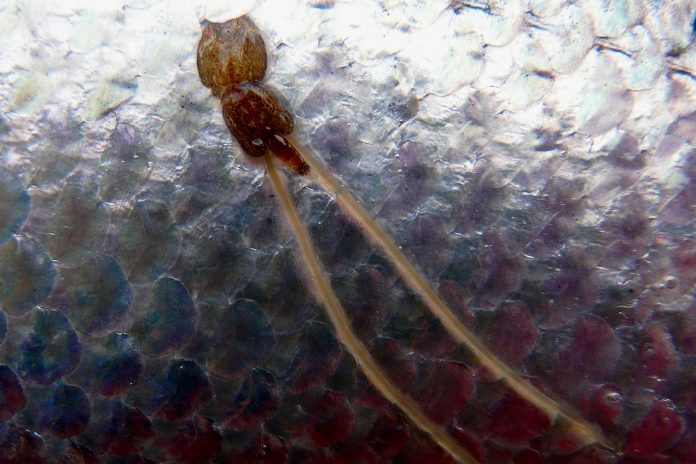In small-scale initial trials, salmon saw a 70% reduction in European sea lice, and a 92% reduction in Chilean sea lice.
Erik Slinde, director of research at the Institute of Marine Research (IMR), has discussed efforts to develop a vaccine against sea lice in a recent interview with The Economist.
Sea lice parasites are estimated to cost the UK aquaculture industry alone more than £20 million ($26 million) annually. Existing methods for controlling sea lice, such as chemical pesticides and mechanical delousing, are often costly, polluting, and increasingly ineffective due to resistance.
Dr. Slinde’s team at the Institute of Marine Research in Norway has been working on a vaccine that targets a protein crucial to the lice’s digestion. Initial trials showed promising results, with significant reductions in sea lice infestations.
“Back in the 1980s, it was looked upon as a joke,” Dr. Slinde told the Economist. The development of a successful louse-preventing vaccine could change that. Some teams think they might be close.
“Parasites are really hard to get vaccines against,” Ian Bricknell at the University of Maine told The Economist. “They have evolved so closely with their hosts, they develop mechanisms to overcome the immune defences.”
Traditional vaccines work by injecting neutralized pathogens into a host to help its immune system recognize them in the future. This works for viruses and bacteria, which are simple organisms that can be inactivated in a lab. But sea lice are more complex, have different life stages, and come in different species, making inactivation impossible.
This is why scientists have mostly been trying to make peptide-based vaccines instead. Rather than training the host’s immune system to recognize a whole organism, vaccines of this kind inject the host with specific peptides, chains of amino acids found on proteins crucial for a parasite’s functioning. This induces the host to make antibodies to neutralize those proteins, thereby targeting the parasite.
Crucial protein
In early 2021, Dr. Slinde’s team identified one protein crucial to the lice’s digestion system and copied a chain of 13 amino acids found on its surface. This chain was then synthesized and injected into the salmon. In small-scale initial trials, salmon saw a 70% reduction in European sea lice and a 92% reduction in Chilean sea lice. Larger trials have been less promising, but Dr. Slinde hopes to run more tests soon.
Other research teams are also exploring peptide-based vaccines, focusing on specific proteins essential to the lice’s survival. One team from the Moredun Research Institute and the University of Stirling is using artificial intelligence to identify these proteins and design an effective vaccine.
Costs
Even if such experiments lead to an effective vaccine, though, it may not be that all farmers can use it, according to the Economist. Making proteins from scratch requires cutting-edge technology, meaning that a single dose could cost between $0.80 and $1.
Cristian Gallardo Escárate from Chile’s Interdisciplinary Centre for Aquaculture Research is investigating an alternative approach by targeting bacteria within the lice’s gut. This method has shown promising results in trials, with a high percentage of vaccinated salmon remaining lice-free. These vaccines are cheaper to produce and are currently undergoing regulatory evaluation.
While these developments are groundbreaking, researchers acknowledge that a single, highly effective vaccine is unlikely. Instead, vaccines will likely become one of several tools used to manage sea lice in aquaculture.
“Will we have a vaccine as good as, say, a measles vaccine, which is 98% effective,” asks Dr Bricknell. “Probably not.”


